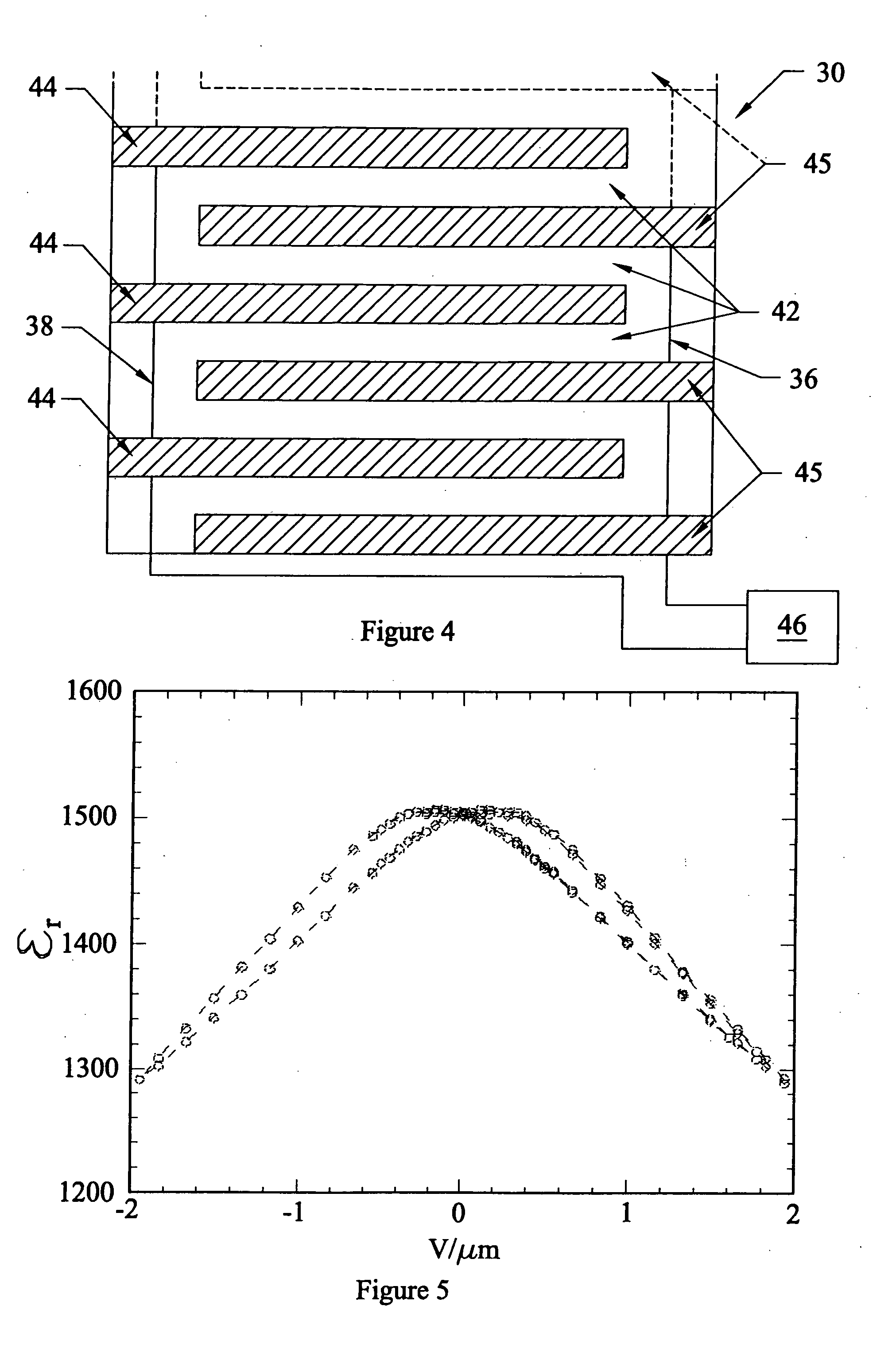Electronic and optical devices and methods of forming these devices
a technology of optical devices and electronic devices, applied in the direction of instruments, non-linear optics, optical elements, etc., can solve the problems of affecting the designability of radio frequency (rf) or electrooptic devices, affecting the freedom of designability of radio frequency or electrooptic devices, etc., to minimize the interaction with wave propagation, minimize loss, and minimize leakage
- Summary
- Abstract
- Description
- Claims
- Application Information
AI Technical Summary
Benefits of technology
Problems solved by technology
Method used
Image
Examples
example 1
Deposition of BST on Sapphire
[0114] In this example, Ba0.6Sr0.4TiO3 coatings were deposited onto C-plane Sapphire 250 nanometers thick using the CCVD process. The solution of the Ba0.6Sr0.4TiO3 precursor contained 0.0143 wt % of Sr in the form of strontium 2-ethylhexanoate, 0.0615 wt % of Ba in the form of barium 2-ethylhexanoate, 0.0355 wt % Ti (di-1-propoxide)bis(acetylacetonate), 12.6049 wt % toluene, 0.0118 wt % isoproponal, 1.5333 wt % 1-butanol, and 85.7412 wt % propane. The constant flow rate for the solution was at 2.0 ml / min and for the tip oxygen 4000 ml / min at 80 psi. The gas temperature as measured close to the substrate front surface varied from 900 to 1100° C. BST deposition was epitaxial with 1,1,1 lattice structure.
example 2
[0115] Deposition of BST on Sapphire and Device Construction In this example, Ba0.6Sr0.4TiO3 coatings were deposited onto C-plane Sapphire 377 nanometers thick using the CCVD process. The solution of the Ba0.6Sr0.4TiO3 precursor contained 0.0143 wt % of Sr in the form of strontium 2-ethylhexanoate, 0.0615 wt % of Ba in the form of barium 2-ethylhexanoate, 0.0355 wt % Ti (di-1-propoxide)bis(acetylacetonate), 12.6049 wt % toluene, 0.0118 wt % isoproponal, 1.5333 wt % 1-butanol, and 85.7412 wt % propane. The constant flow rate for the solution was at 3.0 ml / min and for the tip oxygen 4000 ml / min at 80 psi. The gas temperature as measured close to the substrate front surface was 1200° C. Deposition was epitaxial with 1,1,1 lattice structure.
[0116] After forming the BST layer, a chromium bond layer and a gold conductive layer were formed on top of the BST using conventional coating methods. The chromium and gold were then patterned to form two electrodes of a 50 finger interdigital capa...
example 3
[0119] In this example, Ba0.6Sr0.4TiO3 coatings were deposited onto polycrystalline alumina using the CCVD process. Polycrystalline alumina is a less expensive substrate material, but prior art techniques to deposit BST on alumina have resulted in significantly lower performance. By using CCVD, a quality layer was formed. The solution of the Ba0.6Sr0.4TiO3 precursor contained 0.0143 wt % of Sr in the form of strontium 2-ethylhexanoate, 0.0615 wt % of Ba in the form of barium 2-ethylhexanoate, 0.0355 wt % Ti (di-i-propoxide)bis(acetylacetonate), 12.6049 wt % toluene, 0.0118 wt % isopropanol, 1.5333 wt % 1-butanol, and 85.7412 wt % propane. The constant flow rate for the solution was at 5.0 ml / min and for the tip oxygen 4020 ml / min at 30 psi. The gas temperature as measured close to the substrate front surface was 1150° C.
PUM
 Login to View More
Login to View More Abstract
Description
Claims
Application Information
 Login to View More
Login to View More - R&D
- Intellectual Property
- Life Sciences
- Materials
- Tech Scout
- Unparalleled Data Quality
- Higher Quality Content
- 60% Fewer Hallucinations
Browse by: Latest US Patents, China's latest patents, Technical Efficacy Thesaurus, Application Domain, Technology Topic, Popular Technical Reports.
© 2025 PatSnap. All rights reserved.Legal|Privacy policy|Modern Slavery Act Transparency Statement|Sitemap|About US| Contact US: help@patsnap.com



